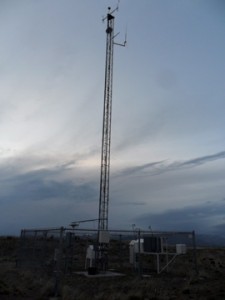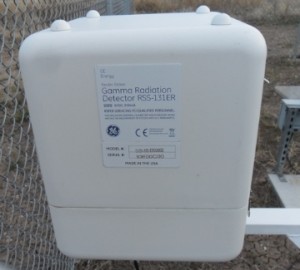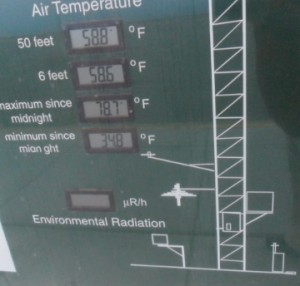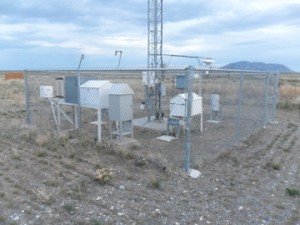As the Japanese nuclear disaster continues on, with no end in sight, I discovered that a public radiation detector, or High Pressure Ion Chamber (HPIC)/gamma detector, in the middle of nowhere eastern Idaho, apparently is not working.
It’s part of the Idaho Environmental Monitoring Program (IEMP), which is actually run by a conglomeration of Federal and State agencies. They include the State of Idaho, National Oceanic and Atmospheric Administration (NOAA), Shoshone-Bannock Tribes and the Idaho National Laboratory (INL).
IEMP is located at the Big Lost River rest stop along U.S. 26/20 highway. It’s sandwiched between the INL complex and EBR 1. The area is home to at least 50 nuclear power projects, a sign at the rest stop claims it’s the most nuclear projects in one area in the whole world.
At the rest stop there is also a display that presents current IEMP data to the public. However, the gamma radiation display is blank. There is a website, www.idahoop.org. The website is not put together well, but when I clicked on the Rest Area Tower (found under the Community Monitoring section) it does display the gamma levels. As of 25 May 2012 background gamma radiation is at 16.1 μR/h (micro Roentgens per hour).
This might be a little high, but how are we in the general public supposed to know? Here’s a couple of examples: According to Wikipedia 9.8 μR/h equals approximately 86 mR/year, which is considered “less than typical”. Another example is that of the ghost city of Pripyat, which was contaminated by Chernobyl in the 1980s. As of 5 January 2012 the city was still showing gamma levels as high as 66 μR/h, which is why no one can live there!
The IEMP website also gives you locations of several other gamma stations throughout eastern Idaho. They surround the INL. Here’s what the many Towers were picking up on 25 May 2012: Blackfoot 10.4 μR/h, Idaho Falls 13.8 μR/h, Fort Hall reservation 14.5 μR/h, Rexburg 13.0 μR/h and Terreton 15.0 μR/h.
The major problem with this IEMP website is that it does not give you any historical gamma readings. The system was put into place in 1997, and having that historical data would be the best way to see if gamma radiation was increasing or not. We also don’t know if the current, slightly higher than “typical”, micro Roentgens per hour of gamma radiation is the result of the record number of nuclear projects in the area, or from Japan’s Fukushima Daiichi!
There are many EMP sites throughout the United States, such as CEMP in Nevada. But not all monitor gamma radiation. The CIEMP checks only solar radiation (net radiation). You can search under “environmental monitoring program” to see if any are in your area of the U.S.



